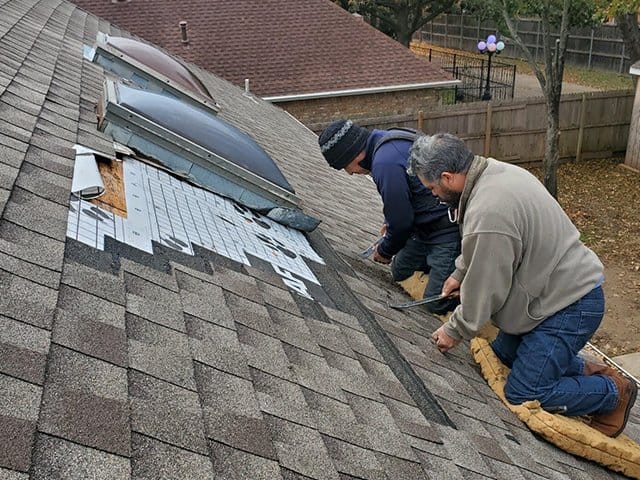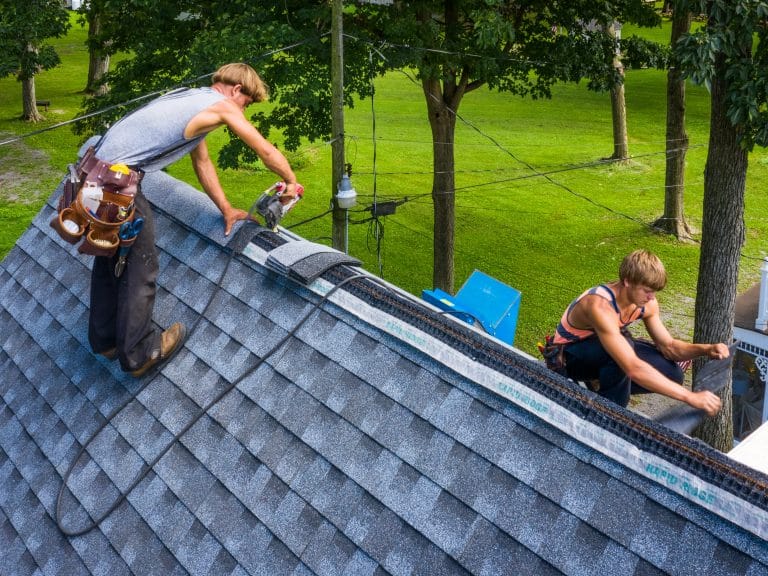The Ultimate Guide to Comprehending Different Sorts Of Roofing Shingle Products
Recognizing the various kinds of roof covering roof shingles materials is important for property owners seeking to make informed selections that line up with their needs and choices. From the cost-efficient nature of asphalt shingles to the style of timber and the long life of metal and slate, each option offers unique benefits and difficulties. As we explore these products, it ends up being evident that the decision goes past visual appeals; it incorporates aspects such as toughness, maintenance, and ecological effect. The ideal choice can substantially influence not just the home's appearance yet likewise its overall value and strength. What considerations should guide your choice?

Asphalt Shingles
Asphalt shingles are a preferred choice for property owners because of their cost, toughness, and convenience of installment. Made up of a fiberglass mat saturated with asphalt and coated with mineral granules, these shingles provide effective protection against weather condition aspects while making sure a long life expectancy.
There are two primary sorts of asphalt shingles: three-tab and architectural. Three-tab tiles are light-weight, economical, and simple to install, making them a typical option for budget-conscious property owners. On the other hand, architectural tiles include an even more dimensional look, offering enhanced aesthetic charm and improved wind resistance, frequently at a slightly greater price.
One of the key advantages of asphalt roof shingles is their versatility; they come in a wide range of shades and styles, making it possible for home owners to quickly match their roofing with the overall visual of their home. Furthermore, they generally have a life-span ranging from 20 to 30 years, depending on the high quality and installation techniques.
Maintenance is usually very little, although normal examinations and cleaning can prolong the life of the roof. On the whole, asphalt shingles continue to be a functional and trustworthy roofing option, balancing expense, capability, and visual allure for a wide series of domestic applications.
Timber Shingles
Timber tiles provide a natural aesthetic that attract several house owners looking for a traditional, rustic seek their roofing systems. Commonly crafted from cedar, yearn, or redwood, these tiles supply an one-of-a-kind charm and can improve the general personality of a home. Their all-natural colors and textures can create a warm and inviting environment, making them a preferred selection in different architectural styles.
One significant advantage of timber tiles is their shielding residential or commercial properties, which can help regulate interior temperatures. Wood shingles call for routine maintenance to prevent concerns associated to moisture, such as rot and mold.
Despite their visual charm, wood tiles might not be appropriate for all climates, particularly in locations susceptible to wildfires. Homeowners must additionally take into consideration the life expectancy of wood roof shingles, which usually ranges from 20 to 40 years, relying on the sort of timber and upkeep practices. Overall, timber shingles can be an excellent option for those that prioritize beauty and all-natural products in their roof decisions.
Steel Roof
Metal roof covering has gotten popularity amongst homeowners and home builders alike due to its durability, durability, and reduced maintenance needs. Available in a selection of materials, consisting of steel, aluminum, copper, and zinc, metal roof coverings provide convenience in layout and visual charm. They can be located in different designs, from standing seam to steel tiles, allowing property owners to pick an option that complements their architectural vision.
Among the primary advantages of metal roof is its exceptional life-span, frequently surpassing half a century with appropriate treatment. This long life causes minimized replacement expenses gradually, making it a cost-effective choice. Metal roofing systems are resistant to extreme weather problems, consisting of hailstorm, wind, and snow, which improves their dependability.
Along with their toughness, steel roofings are ecologically friendly, as they are commonly made from recycled products and can be recycled at the end of a fantastic read their life cycle. They also mirror solar convected heat, adding to energy efficiency and reduced air conditioning expenses. In general, metal roofing integrates visual charm with useful benefits, making it an increasingly favored option in modern-day building.
Slate Shingles

In addition, slate roof shingles are fire-resistant and do not warp or end up being weak over time, including in their charm for home owners seeking a trusted roofing service. The aesthetic adaptability of slate is an additional substantial benefit; it is available in different colors and you could check here structures, enabling for a personalized look that can enhance any kind of architectural style.
Installation of slate roof shingles, nonetheless, requires specialized skills due to their weight and the requirement for accurate alignment. This can result in greater first prices contrasted to various other roof covering materials. The lasting worth of slate, both in terms of toughness and prospective power performance, often offsets these upfront expenses.
Artificial Alternatives
As home owners increasingly look for alternatives to standard materials, synthetic roofing options have actually obtained popularity for their versatility and cost-effectiveness. These ingenious products provide a blend of aesthetic appeals, efficiency, and toughness, making them an appealing option for a vast variety of architectural styles.
Synthetic roofing tiles are typically made from a mix of polymers and recycled products, allowing suppliers to produce products that resemble the look of all-natural products like slate or timber without the linked maintenance difficulties. roofer contractors. One YOURURL.com of one of the most significant advantages of synthetic tiles is their light-weight nature, which reduces the architectural load on a home. Additionally, they are engineered to stand up to harsh weather condition problems, supplying superior resistance to wind, hailstorm, and UV radiation
In general, synthetic roof covering materials stand for a wise financial investment for those looking to enhance their home's curb allure while making certain long-term dependability and sustainability. As technology proceeds to development, these options are likely to progress, further solidifying their area in the roof market.
Conclusion
In verdict, the choice of roof covering shingle materials considerably affects the aesthetic, durability, and maintenance of domestic frameworks. Asphalt tiles use affordability and convenience of installment, while timber shingles give natural appeal. Metal roof covering presents extraordinary resilience, and slate tiles are renowned for their longevity and sophistication. Synthetic alternatives integrate various advantages, catering to varied property owner choices. Inevitably, understanding these materials makes it possible for educated decision-making, making sure that selections align with monetary constraints and environmental factors to consider.